VATICAN CITY — So much for a short pontificate.
Pope Francis celebrates the 10th anniversary of his election Monday, far outpacing the “two or three” years he once envisioned for his papacy and showing no signs of slowing down.
On the contrary, with an agenda full of problems and plans, and no longer encumbered by the shadow of Pope Benedict XVI, the 86-year-old Argentine Jesuit backed off from talking about retiring and recently described the papacy as a job for life.
History’s first Latin American pope already made his mark and could have even more impact in the years to come.
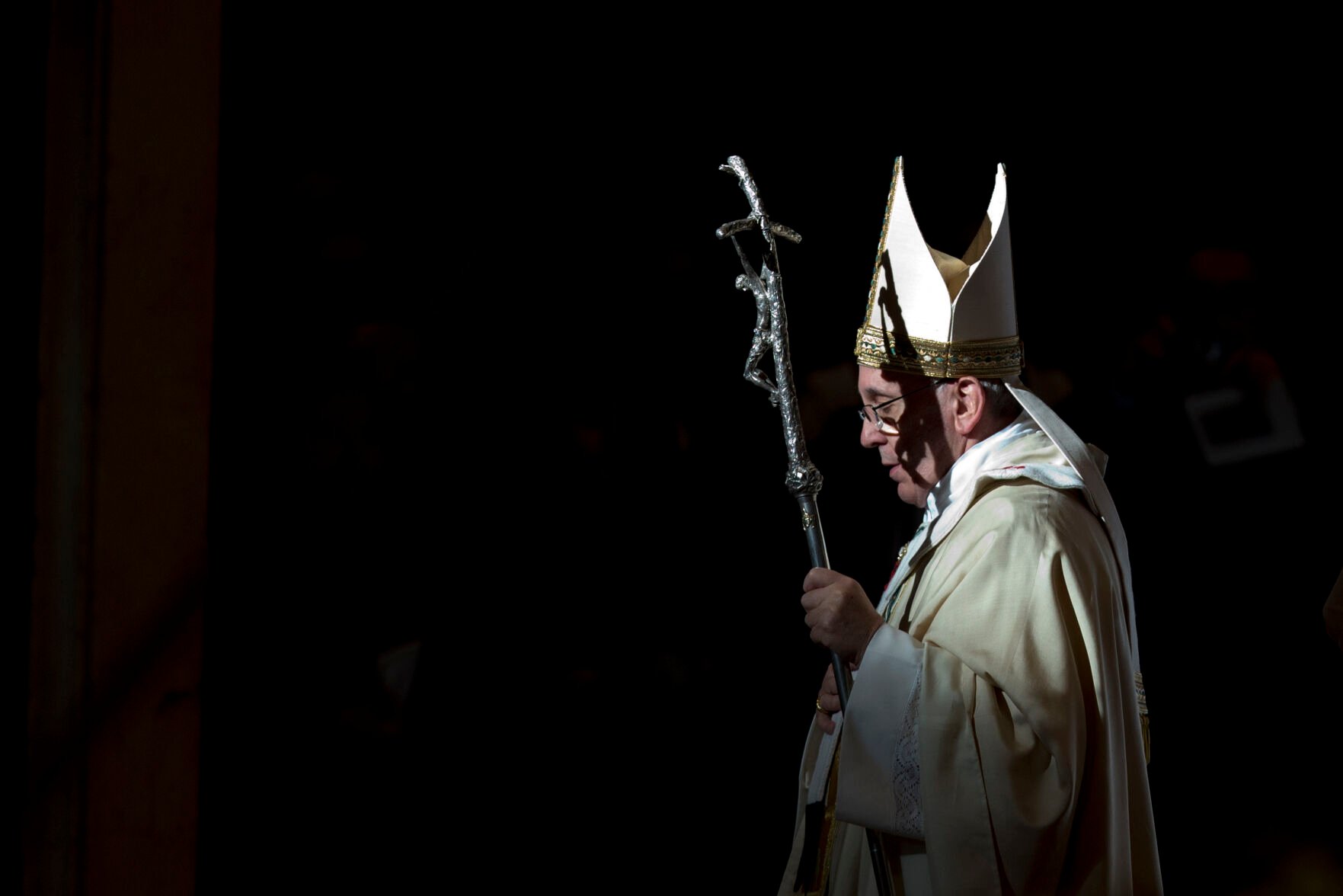
Andrew Medichini, Associated Press
Pope Francis holds the pastoral staff Jan. 6, 2014, as he leaves after celebrating a Mass to mark Epiphany in St. Peter's Basilica at the Vatican.
Sex absuse
Francis initially downplayed the problem of clergy sex abuse but had a wake-up call five years into his pontificate after a visit to Chile.
During the trip, he discovered a serious disconnect between what Chilean bishops told him about a notorious case and the reality: Hundreds or thousands of Chilean faithful had been raped and molested by Catholic priests over decades.
“That was my conversion,” he told the AP. “That’s when the bomb went off, when I saw the corruption of many bishops in this.”
Francis passed a series of measures since then aimed at holding the church hierarchy accountable, but results have been mixed. Benedict removed some 800 priests, but Francis seems far less eager to defrock abusers.
The next frontier in the crisis already reared its head: the sexual, spiritual and psychological abuse of adults by clergy. Francis is aware of the problem — a new case concerns one of his fellow Jesuits — but there seems to be no will to take firm action.
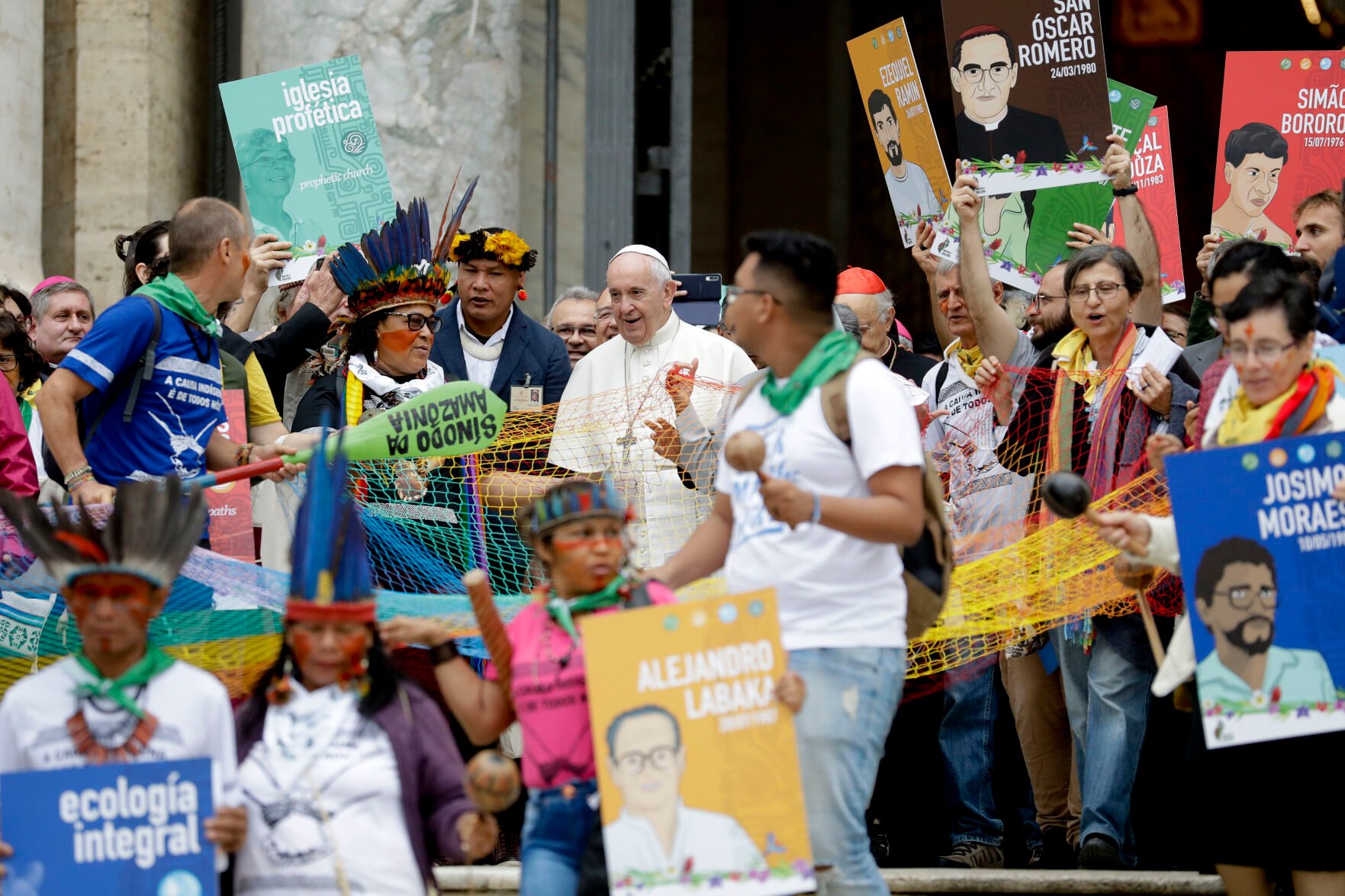
Andrew Medichini, Associated Press
Pope Francis walks in a procession Oct. 7, 2019, on the occasion of the Amazon synod, at the Vatican.
Significance of synods
“Synodality,” a term that has little meaning outside Catholic circles, could go down as one of Francis’ most important church contributions.
A synod is a gathering of bishops, and Francis’ philosophy that bishops must listen to one another and the laity has come to define his vision for the Catholic Church: He wants it to be a place where the faithful are welcomed, accompanied and heard.
The synods held during his first 10 years produced some of the most significant — and controversial — moments of his papacy.
After listening to the plight of divorced Catholics during a 2014-15 synod, for instance, Francis opened the door to letting divorced and civilly remarried couples receive Communion. Calls to allow married priests marked his 2019 synod on the Amazon, although Francis ultimately rejected the idea.
His October synod involved an unprecedented canvassing of the Catholic faithful about their hopes for the church and problems they have encountered, eliciting demands from women for greater leadership roles, including ordination.
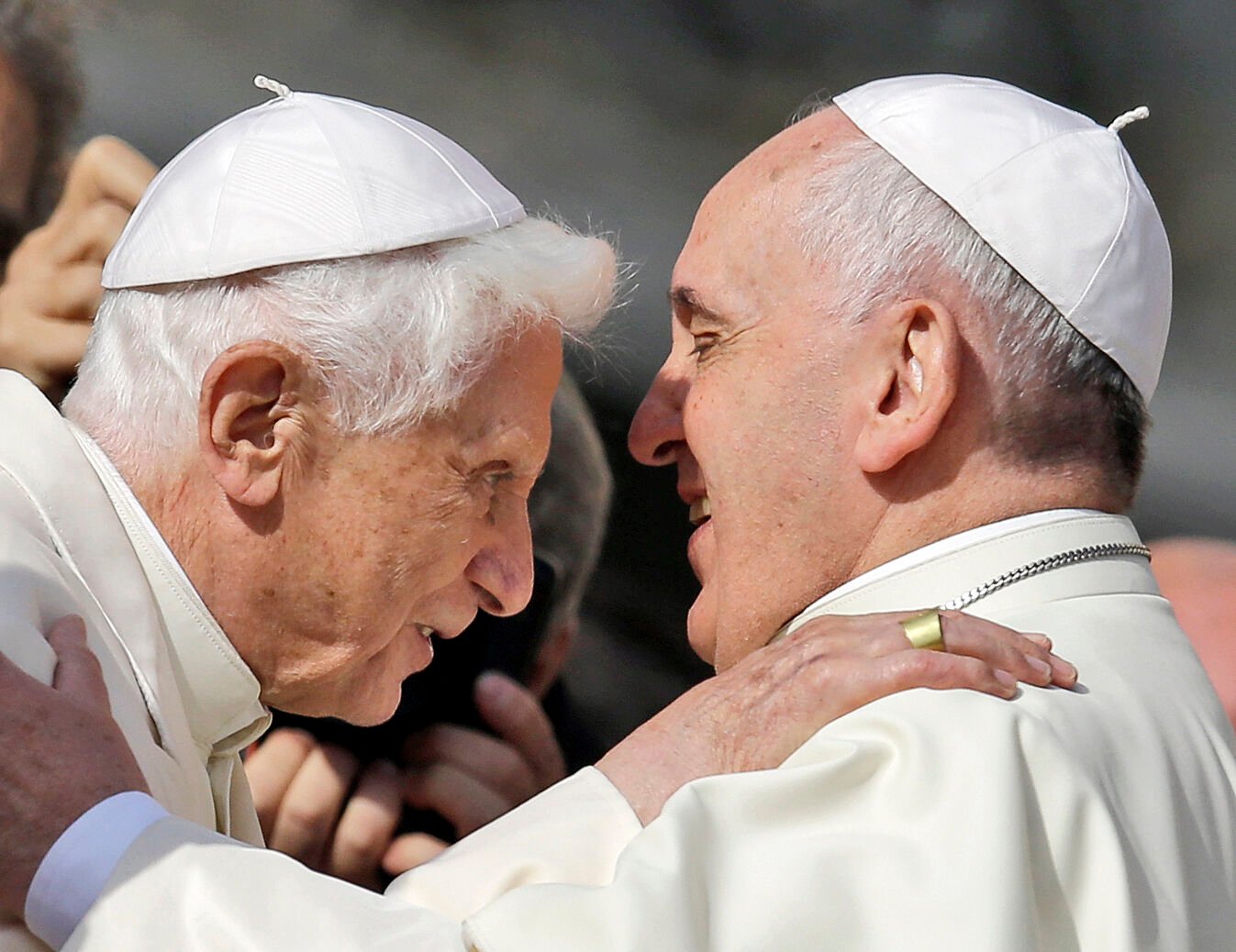
Gregorio Borgia, Associated Press
Pope Francis, right, hugs Pope Emeritus Benedict XVI on Sept. 28, 2014, prior to the start of a meeting with elderly faithful in St. Peter's Square at the Vatican.
Latin Mass
Catholic traditionalists were wary when Francis emerged as pope for the first time on the loggia of St. Peter’s Basilica without the red cape that his predecessors had worn for formal events. Yet they never expected him to reverse one of Benedict’s signature decisions by reimposing restrictions on the old Latin Mass, including where and who can celebrate it.
Francis justified his move by saying Benedict’s decision to liberalize the celebration of the old Mass became a source of division in parishes. But traditionalists took the renewed restrictions as an attack on orthodoxy, one they saw as contradicting Francis’ “all are welcome” mantra.
“Instead of integrating them into parish life, the restriction on the use of parish churches will marginalize and push to the peripheries faithful Catholics who wish only to worship,” lamented Joseph Shaw of the Latin Mass Society’s U.K. branch.
While the short-term prospects for Francis relenting are not great, traditionalists know that another pope might come along who is more friendly to the old rite.
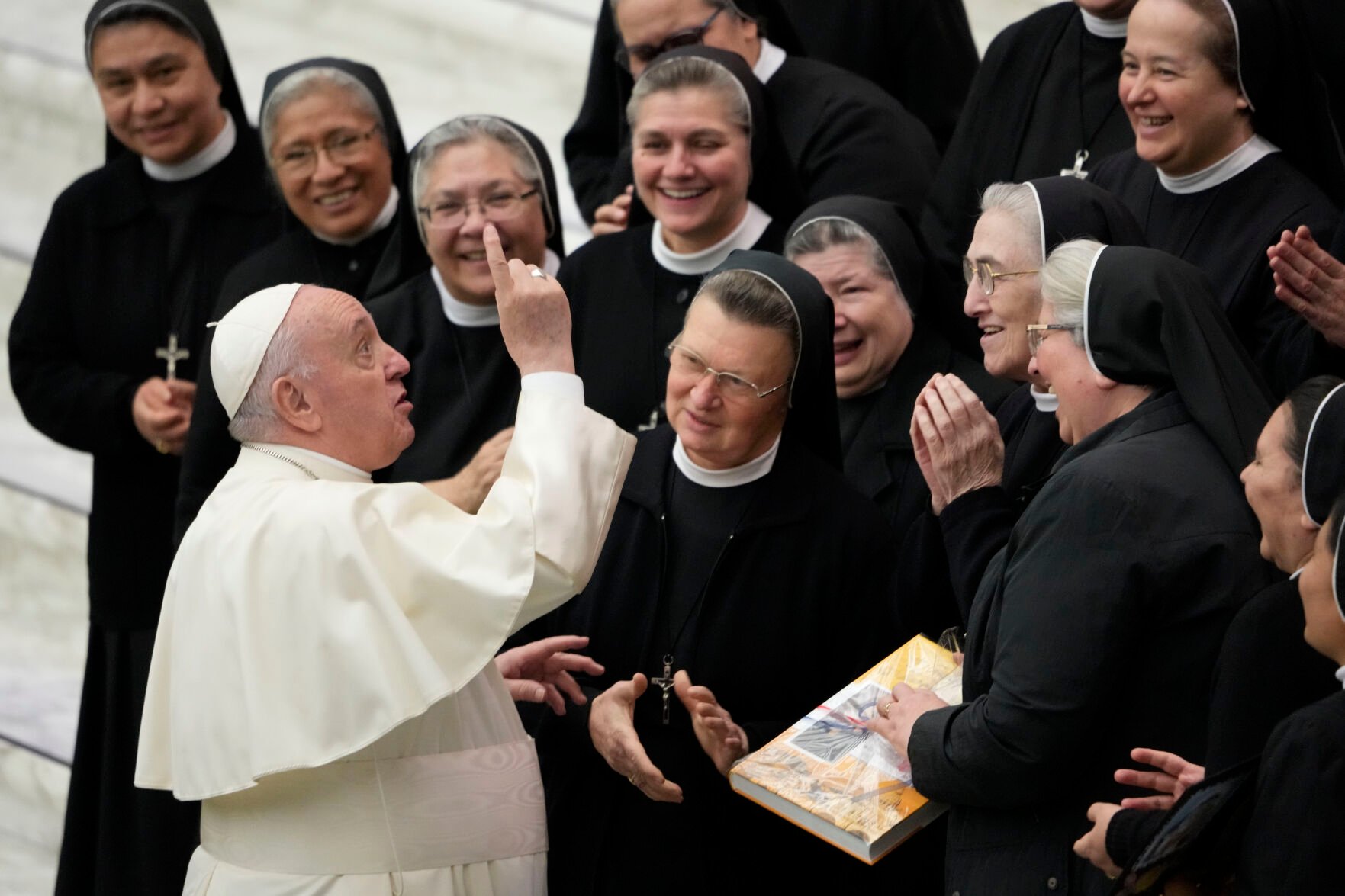
Andrew Medichini, Associated Press
Pope Francis salutes a group of nuns Nov. 24, 2021, at the end of his weekly general audience in the Paul VI Hall the Vatican.
Role of women
Francis’ quips about the “female genius” have long made women cringe. Women theologians are the “strawberries on the cake,” he once said. Nuns shouldn’t be “old maids,” he said. Europe shouldn’t be a barren, infertile “grandmother,” he told European Union lawmakers — a remark that got him an angry phone call from then-German Chancellor Angela Merkel.
But, it’s also true that Francis has done more to promote women in the church than any pope before him, including naming several women to high-profile positions in the Vatican.
Still, only one in four Holy See employees is female, no woman heads a department and women remain forbidden from the priesthood.
But the trend is there and “there is no possibility of going back,” said María Lía Zervino, one of the first three women named to the Vatican office that helps the pope select bishops around the world.
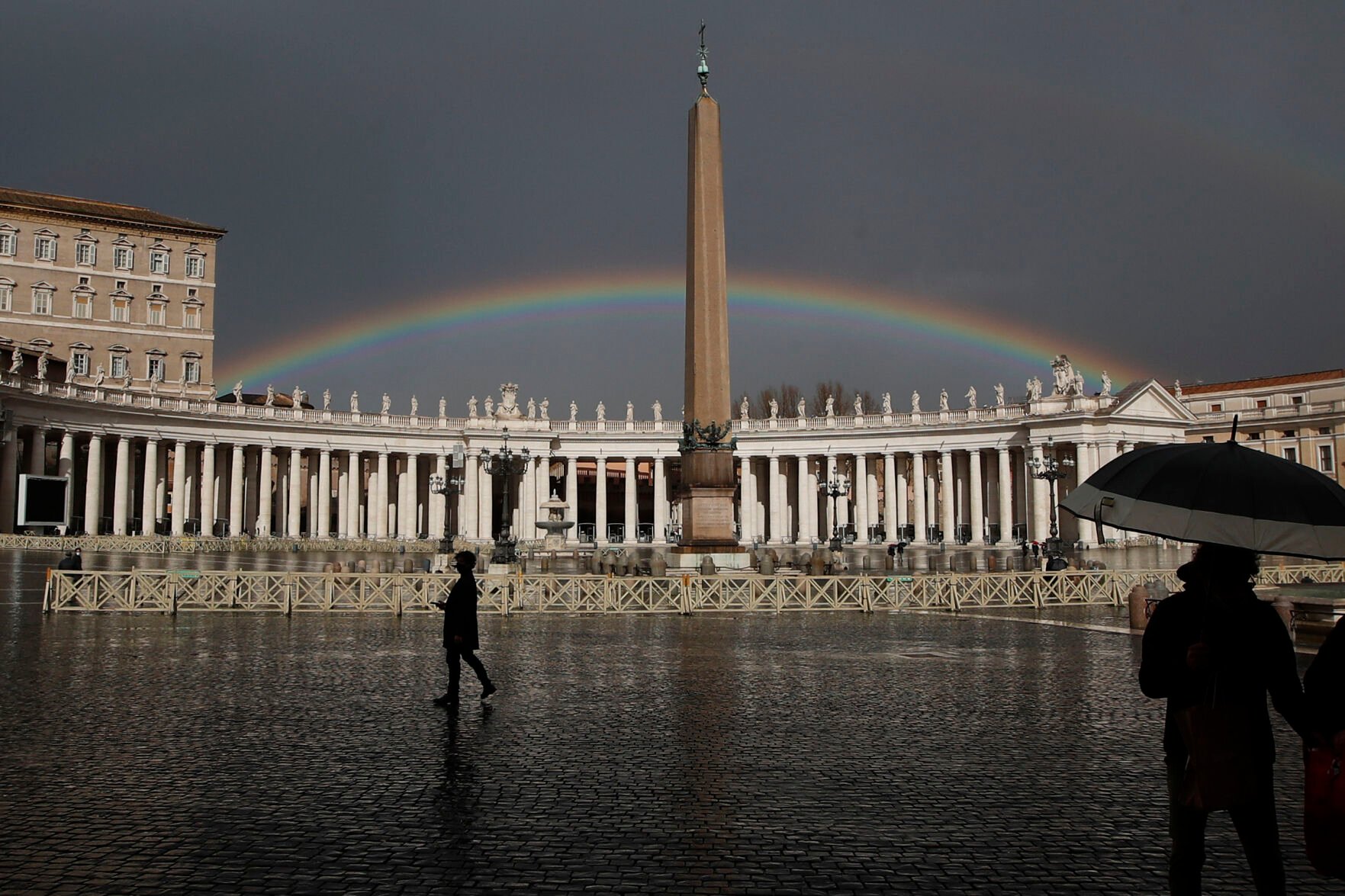
Alessandra Tarantino, Associated Press
A rainbow shines Jan. 31, 2021, over St. Peter's Square at the Vatican.
LGBTQ faithful
Francis’ insistence that long-marginalized LGBTQ Catholics can find a welcome home in the church can be summed up by two pronouncements that book-ended his papacy to date: “Who am I to judge?” and “Being homosexual is not a crime.”
Francis made outreach to LGBTQ people a hallmark of his papacy more than any pope before him.
He ministers to members of a transgender community in Rome. He has counseled gay couples seeking to raise their children Catholic. During a 2015 visit to the U.S., he publicized a private meeting with a gay former student and the man’s partner to counter the conservative narrative that he received an anti-same-sex marriage activist.
-
Pope bolsters women at Vatican but resistance remains
Gregorio Borgia
Pope Francis blesses one of the nineteen new priests that he ordained during a ceremony in St. Peter's Basilica at the Vatican, Sunday, April 26, 2015. (AP Photo/Gregorio Borgia)
Gregorio Borgia
Pope Francis blesses one of the nineteen new priests that he ordained during a ceremony in St. Peter's Basilica at the Vatican, Sunday, April 26, 2015. (AP Photo/Gregorio Borgia)
-
Pope bolsters women at Vatican but resistance remains
Massimo Pinca
FILE - In this June 21, 2015 file photo, Pope Francis salutes the faithful gathered outside the hospital Cottolengo of Turin, northern Italy. Italian tenor Andrea Bocelli, Colombian pop singer Juanes and the Philadelphia Orchestra are among the musical acts organizers say will perform for Pope Francis during his visits to the city this fall. World Meeting of Families organizers say Tuesday the singers and symphony orchestra will appear at the Festival of Families celebration Sept. 26 on the Benjamin Franklin Parkway in downtown Philadelphia. (AP Photo/Massimo Pinca, File)
Massimo Pinca
FILE - In this June 21, 2015 file photo, Pope Francis salutes the faithful gathered outside the hospital Cottolengo of Turin, northern Italy. Italian tenor Andrea Bocelli, Colombian pop singer Juanes and the Philadelphia Orchestra are among the musical acts organizers say will perform for Pope Francis during his visits to the city this fall. World Meeting of Families organizers say Tuesday the singers and symphony orchestra will appear at the Festival of Families celebration Sept. 26 on the Benjamin Franklin Parkway in downtown Philadelphia. (AP Photo/Massimo Pinca, File)
-
-
Pope bolsters women at Vatican but resistance remains
Pablo Martinez Monsivais
An unidentified child, who was carried out from the crowd to meet Pope Francis, reaches out to touch the Pontiff's face during a parade on his way to celebrate Sunday Mass on the Benjamin Franklin Parkway in Philadelphia, Sunday, Sept. 27, 2015. Pope Francis is in Philadelphia for the last leg of his six-day visit to the United States. (AP Photo/Pablo Martinez Monsivais)
Pablo Martinez Monsivais
An unidentified child, who was carried out from the crowd to meet Pope Francis, reaches out to touch the Pontiff's face during a parade on his way to celebrate Sunday Mass on the Benjamin Franklin Parkway in Philadelphia, Sunday, Sept. 27, 2015. Pope Francis is in Philadelphia for the last leg of his six-day visit to the United States. (AP Photo/Pablo Martinez Monsivais)
-
Pope bolsters women at Vatican but resistance remains
Uncredited
Pope Francis comforts a child during a brief, unscheduled stop at a pediatric hospital on his way to Bangui cathedral, Central African Republic, Sunday, Nov. 29, 2015. Pope Francis is in Africa for a six-day visit that is taking him to Kenya, Uganda and the Central African Republic. (L'Osservatore Romano/Pool Photo via AP)
Uncredited
Pope Francis comforts a child during a brief, unscheduled stop at a pediatric hospital on his way to Bangui cathedral, Central African Republic, Sunday, Nov. 29, 2015. Pope Francis is in Africa for a six-day visit that is taking him to Kenya, Uganda and the Central African Republic. (L'Osservatore Romano/Pool Photo via AP)
-
-
Pope bolsters women at Vatican but resistance remains
Andrew Medichini
Pope Francis waves to the crowd as he arrives on his pope-mobile for his weekly general audience, in St. Peter's Square at the Vatican, Wednesday, April 6, 2016. (AP Photo/Andrew Medichini)
Andrew Medichini
Pope Francis waves to the crowd as he arrives on his pope-mobile for his weekly general audience, in St. Peter's Square at the Vatican, Wednesday, April 6, 2016. (AP Photo/Andrew Medichini)
-
Pope bolsters women at Vatican but resistance remains
Osservatore Romano
Members of the Italian pop trio Il Volo (The Flight), Gianluca Ginoble, left, Ignazio Boschetto, center, and Piero Barone, right, present a record with their music to Pope Francis, during a private audience, at the Vatican, Saturday, May 6, 2017. (L'Osservatore Romano/Pool Photo via AP)
Osservatore Romano
Members of the Italian pop trio Il Volo (The Flight), Gianluca Ginoble, left, Ignazio Boschetto, center, and Piero Barone, right, present a record with their music to Pope Francis, during a private audience, at the Vatican, Saturday, May 6, 2017. (L'Osservatore Romano/Pool Photo via AP)
-
-
Pope bolsters women at Vatican but resistance remains
Alessandra Tarantino
Pope Francis rises the holy host during a Mass in San Pier Damiani parish church in Casal Bernocchi, in the outskirts of Rome, Sunday, May 21, 2017. (AP Photo/Alessandra Tarantino)
Alessandra Tarantino
Pope Francis rises the holy host during a Mass in San Pier Damiani parish church in Casal Bernocchi, in the outskirts of Rome, Sunday, May 21, 2017. (AP Photo/Alessandra Tarantino)
-
Pope bolsters women at Vatican but resistance remains
Andrew Medichini
Pope Francis kisses a baby as he arrives for his weekly general audience, at the Vatican, Wednesday, Sept. 27, 2017. (AP Photo/Andrew Medichini)
Andrew Medichini
Pope Francis kisses a baby as he arrives for his weekly general audience, at the Vatican, Wednesday, Sept. 27, 2017. (AP Photo/Andrew Medichini)
-
-
Pope bolsters women at Vatican but resistance remains
Andrew Medichini
Pope Francis' pastoral staff is hit by a ray of the sun during the canonization mass for 35 new saints in St. Peter's Square at the Vatican, Sunday, Oct.15, 2017. (AP Photo/Andrew Medichini)
Andrew Medichini
Pope Francis' pastoral staff is hit by a ray of the sun during the canonization mass for 35 new saints in St. Peter's Square at the Vatican, Sunday, Oct.15, 2017. (AP Photo/Andrew Medichini)
-
Pope bolsters women at Vatican but resistance remains
Andrew Medichini
Pope Francis delivers his speech during a meeting with Myanmar's leader Aung San Suu Kyi, at the International Convention Centre of Naypyitaw, Myanmar, Tuesday, Nov. 28, 2017. The pontiff is in Myanmar for the first stage of a week-long visit that will also take him to neighboring Bangladesh. (AP Photo/Andrew Medichini)
Andrew Medichini
Pope Francis delivers his speech during a meeting with Myanmar's leader Aung San Suu Kyi, at the International Convention Centre of Naypyitaw, Myanmar, Tuesday, Nov. 28, 2017. The pontiff is in Myanmar for the first stage of a week-long visit that will also take him to neighboring Bangladesh. (AP Photo/Andrew Medichini)
-
-
Pope bolsters women at Vatican but resistance remains
POOL
Pope Francis blows a candle on the occasion of his 81st birthday during a private audience with children the Paul VI hall at the Vatican, Sunday, Dec. 17, 2017. (L'Osservatore Romano/Pool Photo via AP)
POOL
Pope Francis blows a candle on the occasion of his 81st birthday during a private audience with children the Paul VI hall at the Vatican, Sunday, Dec. 17, 2017. (L'Osservatore Romano/Pool Photo via AP)
-
Pope bolsters women at Vatican but resistance remains
POOL
Pope Francis waves to faithful during the Urbi et Orbi (Latin for ' to the city and to the world') Christmas' day blessing from the main balcony of St. Peter's Basilica at the Vatican, Monday, Dec. 25, 2017. (L'Osservatore Romano/Pool Photo Via AP)
POOL
Pope Francis waves to faithful during the Urbi et Orbi (Latin for ' to the city and to the world') Christmas' day blessing from the main balcony of St. Peter's Basilica at the Vatican, Monday, Dec. 25, 2017. (L'Osservatore Romano/Pool Photo Via AP)
-
-
Pope bolsters women at Vatican but resistance remains
Rodrigo Abd
Pope Francis greets indigenous representatives in Puerto Maldonado, Peru, Friday, Jan. 19, 2018. Standing with thousands of indigenous Peruvians, Francis declared the Amazon the "heart of the church" and called for a three-fold defense of its life, land and cultures. (AP Photo/Rodrigo Abd)
Rodrigo Abd
Pope Francis greets indigenous representatives in Puerto Maldonado, Peru, Friday, Jan. 19, 2018. Standing with thousands of indigenous Peruvians, Francis declared the Amazon the "heart of the church" and called for a three-fold defense of its life, land and cultures. (AP Photo/Rodrigo Abd)
-
Pope bolsters women at Vatican but resistance remains
Divione Produzione Fotografica
Pope Francis washes the feet of inmates during his visit to the Regina Coeli detention center in Rome, Thursday, March 29, 2018, where he celebrated the "Missa in Coena Domini". Pope Francis visit to a prison on Holy Thursday to wash the feet of some inmates, stresses in a pre-Easter ritual that a pope must serve society's marginalized and give them hope. (Vatican Media via AP)
Divione Produzione Fotografica
Pope Francis washes the feet of inmates during his visit to the Regina Coeli detention center in Rome, Thursday, March 29, 2018, where he celebrated the "Missa in Coena Domini". Pope Francis visit to a prison on Holy Thursday to wash the feet of some inmates, stresses in a pre-Easter ritual that a pope must serve society's marginalized and give them hope. (Vatican Media via AP)
-
-
Pope bolsters women at Vatican but resistance remains
Andrew Medichini
Pope Francis smiles as he looks at a llama upon his arrival in St.Peter's Square at the Vatican for his weekly general audience, Wednesday, April 11, 2018. Three men from the South Tyrol region of northern Italy walked with three llamas in a two-month pilgrimage to reach the Vatican. (AP Photo/Andrew Medichini)
Andrew Medichini
Pope Francis smiles as he looks at a llama upon his arrival in St.Peter's Square at the Vatican for his weekly general audience, Wednesday, April 11, 2018. Three men from the South Tyrol region of northern Italy walked with three llamas in a two-month pilgrimage to reach the Vatican. (AP Photo/Andrew Medichini)
-
Pope bolsters women at Vatican but resistance remains
Andrew Medichini
Pope Francis twirls a soccer ball he was presented by a member of the Circus of Cuba, during his weekly general audience in the Pope Paul VI hall, at the Vatican, Wednesday, Jan. 2, 2019. (AP Photo/Andrew Medichini)
Andrew Medichini
Pope Francis twirls a soccer ball he was presented by a member of the Circus of Cuba, during his weekly general audience in the Pope Paul VI hall, at the Vatican, Wednesday, Jan. 2, 2019. (AP Photo/Andrew Medichini)
-
-
Pope bolsters women at Vatican but resistance remains
Kamran Jebreili
Pope Francis blesses a boy during a Mass at the Sheikh Zayed Sports City in Abu Dhabi, United Arab Emirates, Tuesday, Feb. 5, 2019. Francis travelled to Abu Dhabi to participate in a conference on inter religious dialogue sponsored the Emirates-based Muslim Council of Elders, an initiative that seeks to counter religious fanaticism by promoting a moderate brand of Islam. (AP Photo/Kamran Jebreili)
Kamran Jebreili
Pope Francis blesses a boy during a Mass at the Sheikh Zayed Sports City in Abu Dhabi, United Arab Emirates, Tuesday, Feb. 5, 2019. Francis travelled to Abu Dhabi to participate in a conference on inter religious dialogue sponsored the Emirates-based Muslim Council of Elders, an initiative that seeks to counter religious fanaticism by promoting a moderate brand of Islam. (AP Photo/Kamran Jebreili)
-
Pope bolsters women at Vatican but resistance remains
Andrew Medichini
Pope Francis holds up the holy host as he celebrates a Mass in front of St. Pancrazio Cathedral, in Albano, in the outskirts of Rome, Saturday, Sept. 21, 2019. (AP Photo/ Andrew Medichini)
Andrew Medichini
Pope Francis holds up the holy host as he celebrates a Mass in front of St. Pancrazio Cathedral, in Albano, in the outskirts of Rome, Saturday, Sept. 21, 2019. (AP Photo/ Andrew Medichini)
-
-
Pope bolsters women at Vatican but resistance remains
Eugene Hoshiko
Pope Francis caresses a child in Popemobile as he arrives for Holy Mass at Tokyo Dome Monday, Nov. 25, 2019, in Tokyo. (AP Photo/Eugene Hoshiko)
Eugene Hoshiko
Pope Francis caresses a child in Popemobile as he arrives for Holy Mass at Tokyo Dome Monday, Nov. 25, 2019, in Tokyo. (AP Photo/Eugene Hoshiko)
-
Pope bolsters women at Vatican but resistance remains
Alessandra Tarantino
Pope Francis greets a group of Mexican pilgrims in the Paul VI Hall at the Vatican during his weekly general audience, Wednesday, Dec. 11, 2019. (AP Photo/Alessandra Tarantino)
Alessandra Tarantino
Pope Francis greets a group of Mexican pilgrims in the Paul VI Hall at the Vatican during his weekly general audience, Wednesday, Dec. 11, 2019. (AP Photo/Alessandra Tarantino)
-
-
Pope bolsters women at Vatican but resistance remains
Alessandra Tarantino
Pope Francis gives the thumbs up as he leaves after his weekly general audience in the Paul VI Hall at the Vatican, Wednesday, Sept. 22, 2021. (AP Photo/Alessandra Tarantino)
Alessandra Tarantino
Pope Francis gives the thumbs up as he leaves after his weekly general audience in the Paul VI Hall at the Vatican, Wednesday, Sept. 22, 2021. (AP Photo/Alessandra Tarantino)
-
Pope bolsters women at Vatican but resistance remains
Andrew Medichini
Pope Francis salutes a group of nuns at the end of his weekly general audience in the Paul VI Hall the Vatican, Wednesday, Nov. 24, 2021. (AP Photo/Andrew Medichini)
Andrew Medichini
Pope Francis salutes a group of nuns at the end of his weekly general audience in the Paul VI Hall the Vatican, Wednesday, Nov. 24, 2021. (AP Photo/Andrew Medichini)





